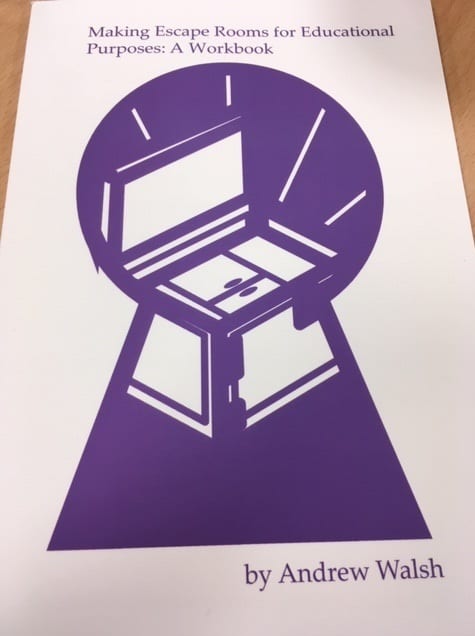At the LEaD away day this summer, we were introduced to the idea of gamifying teaching and learning. The Educational Technology team was inspired to bring aspects of gamification into our training sessions. This resulted in the Get Your Moodle Fix(ed) game at the start of this academic year. Soon after this, I spotted an announcement for a training day on Making Escape Rooms For Educational Purposes. As the session was organised by CILIP (the library association) the session had an emphasis on libraries, but the basic theory can be applied anywhere.
The session was run by Andrew Walsh (@playbrarian) who in his own words is “a librarian who teaches adults to play.” True to his word, we started the day by playing a card-based game in our various teams. It was interesting to see how quickly we bonded as a team over the game (and also how frustrated I got when I didn’t understand some of the instructions!)
The discussion then turned to the advantages of introducing playful learning and using a narrative to reinforce learning, how to sell it to your team and the possible pitfalls. We looked at the different types of puzzles you can create – word games, number puzzles, physical tasks – and the type of equipment you can use – everything from simple paper and pencil to blacklight torches and briefcases with combination locks.
In the afternoon, we got down to the task of creating our own escape room. Having stressed the importance of narrative to learning, we had to come up with a memorable scenario for our room. While other groups were battling zombie apocalypses and alien invasions, we upped the stakes. Our players would be locked in the library with only 30 minutes to get out before the last kebab shop shut – surely a fate worse than facing murderous Martians.
We had to set out the general aim for our session – introduce basic library skills to the participants – and then specific learning objectives – participants should be able to look up a book on the catalogue, understand how shelfmarks are ordered, gain a basic understanding of the Dewey decimal system, etc.
We also had to consider our constraints – Who was playing? How long should the escape take? What space was available? What equipment could we use? What technology was available to us? Did you need staff on had to facilitate the puzzles? Would you give out hints and tips if they got stuck?
We decided that our puzzles could be worked on separately by different members of the team, whereas other teams created linear games that were worked through a puzzle at a time.

It took us a little while to come up with the scenario but once we got going, we were surprised by how many ideas for puzzles we could come up with in a short time. The fact that we were constrained by available technology and time actually helped. We couldn’t make our puzzles too complicated, and most could be created by using material we could print ourselves, or that were easy to get hold of, or to buy for a low cost – a few combination padlocks or lock boxes.
I left the session with a handy booklet which guides you through the various steps of planning your escape room.

Since signing up to attend the session, I have found myself looking for ways to create puzzles based on queries we get through Service Now, common questions we get, aspects of our technologies that we think are underused and should be more used. It has also occurred to me that the escape room doesn’t need to be physical. It would be possible to use the same principles to create a Moodle module which contains a series of quizzes, sections that can only be opened using conditional access, password protected files, hidden clues in embedded videos… The possibilities are endless!


Looking forward to our first Ed Tech Escape Room activity 🙂
Sounds great Kathryn – I must chat to you about it. BTW it’s Andy Walsh not Welsh!
Thanks for sharing.